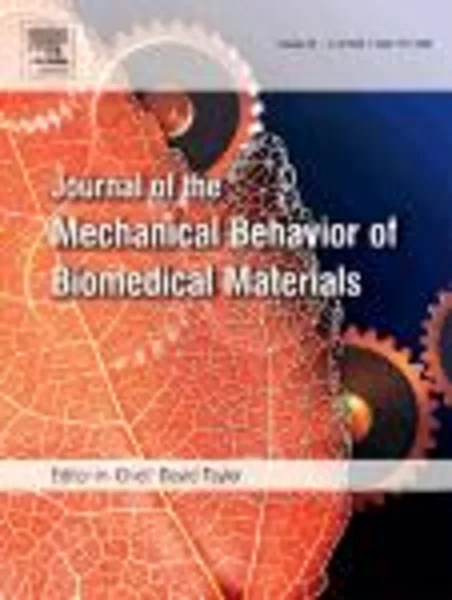-
thiel-fixation preserves the non-linear load–deformation characteristic of spinal motion segments, but increases their flexibility
جزئیات بیشتر مقاله- تاریخ ارائه: 1394/01/01
- تاریخ انتشار در تی پی بین: 1394/01/01
- تعداد بازدید: 700
- تعداد پرسش و پاسخ ها: 0
- شماره تماس دبیرخانه رویداد: -
human cadaveric specimens are recommended as the best option for in-vitro tests. however, fresh human spine specimens are often difficult to obtain. further problems are the potential risk of infection and they can only be used over a limited test period. therefore, the use of embalmed specimens is often discussed. the most common method is formalin fixation. however, this type of embalming can result in failure, because the biomechanical properties of the tissue is partially influenced. in recent years the development of the new method, the fixation according to thiel, could provide an alternative to fresh or formalin-fixed specimens. the aim of the present study is to compare the biomechanical properties between fresh and thiel-fixed spine specimens, and to compare the data to previous data of a test with formalin fixation. for the study, six l1–l2 spinal segments from 16-week-old calves were biomechanically tested. the parameters, range of motion and neutral zone, were determined in flexion/extension, right/left lateral bending and left/right axial rotation. the results showed that the specimens kept their non-linear load–deformation-characteristic after thiel fixation. the range of motion of thiel-fixed specimens increased relative to the unembalmed state by approximately 22% in flexion–extension, 23% in lateral bending (p<0.05) and 45% in axial rotation (p<0.05). in conclusion, the results still suggest a preference for fresh cadaveric spine specimens for quantitative biomechanical in-vitro testing, because they provide the best physiological conditions. however, for preliminary tests, which may only be used for orientation, embalmed specimens using the thiel fixation method might serve as an alternative. compared to formalin-fixated specimens which become approximately 5 times stiffer and completely lose their non-linear load–deformation-characteristic, as found in a previous study; the thiel fixation maintains the non-linear load–deformation-characteristic but increases the range of motion.
مقالات جدیدترین رویدادها
-
استفاده از تحلیل اهمیت-عملکرد در ارائه الگوی مدیریت خلاقیت سازمانی و ارائه راهکار جهت بهبود
-
بررسی تاثیر ارزش وجوه نقد مازاد بر ساختار سرمایه شرکت های پذیرفته شده در بورس اوراق بهادار تهران
-
بررسی تأثیر سطح افشای ریسک بر قرارداد بدهی شرکت های پذیرفته شده در بورس اوراق بهادار تهران
-
بررسی تأثیر رتبه بندی اعتباری مبتنی بر مدل امتیاز بازار نوظهور بر نقد شوندگی سهام با تأکید بر خصوصی سازی شرکت ها
-
تأثیر آمیخته بازاریابی پوشاک ایرانی بر تصویر ذهنی مشتری پوشاک ایرانی (هاکوپیان)
-
طراحی پلاستیک با کنترل مکانیزم قاب های خمشی فولادی با عملکرد بهینه لرزه ای
-
بررسی رابطه وزن با عوامل خطرساز قلبی عروقی در یک جامعه نمونه از مرکز ایران (برنامه قلب سالم اصفهان)
-
بررسی جنبه هایی از گویش دهق و مقایسه آن با فارسی رسمی
-
preliminary seismic microzonation of bojnord using microtremors
-
effects of lactide monomer on the hydrolytic degradation of poly(lactide-co-glycolide) 85l/15g
مقالات جدیدترین ژورنال ها
-
مدیریت و بررسی افسردگی دانش آموزان دختر مقطع متوسطه دوم در دروان کرونا در شهرستان دزفول
-
مدیریت و بررسی خرد سیاسی در اندیشه ی فردوسی در ادب ایران
-
واکاوی و مدیریت توصیفی قلمدان(جاکلیدی)ضریح در موزه آستان قدس رضوی
-
بررسی تاثیر خلاقیت، دانش و انگیزه کارکنان بر پیشنهادات نوآورانه کارکنان ( مورد مطالعه: هتل های 3 و 4 ستاره استان کرمان)
-
بررسی تاثیر کیفیت سیستم های اطلاعاتی بر تصمیم گیری موفق در شرکتهای تولیدی استان اصفهان (مورد مطالعه: مدیران شرکتهای تولیدی استان اصفهان)
-
بررسی نگرش ها و عوامل مؤثر بر استقرار و فرایند گذار به حسابداری تعهدی (مورد مطالعه: آموزش و پرورش استان سیستان و بلوچستان)
-
تأثیر رهبری زهرآگین بر ترومای سازمانی از راه ترویج رفتارهای ریاکارانه و ماکیاولی گرانه
-
اهمیت نگهداری و احیاء بافت های تاریخی و تاثیر آن در گردشگری و توسعه پایدار شهری؛ نمونه موردی شهرخامنه
-
اثر مدیریت سود بر پیچیدگی و طول متن گزارشگری مالی شرکت ها
-
effect of cyclic stress level and overconsolidation ratio on permanent deformation behaviour of clayey subsoil




سوال خود را در مورد این مقاله مطرح نمایید :